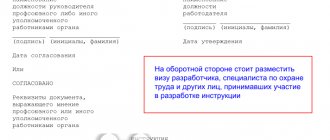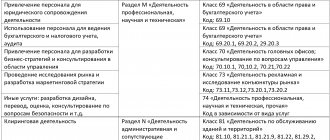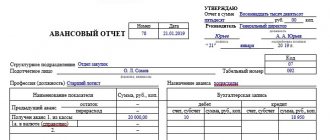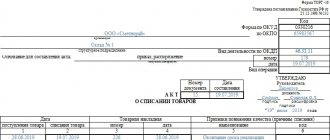The second experiment of the Ministry of Labor on personnel electronic document management has already started. It is difficult to predict how quickly amendments to the legislation will be made based on its results - it is unpredictable. But now many companies want to convert at least part of their personnel documents into digital format. Let's figure out which papers this is legal for.
Today, two approaches to the automation of personnel document flow are clearly visible. The first is proactive, when companies do not wait for the results of the Ministry of Labor’s experiment and switch to an electronic format almost completely. The second is a cautious approach, when only those documents are transferred into electronic form that are clearly permitted by current legislation.
Large companies with a large number of employees and an impressive volume of personnel document flow have been working on the issues of transition to EDI for several years now. As a rule, a team of HR specialists, methodologists, lawyers, and IT specialists is involved in the analysis. This approach allows us to look at the issue comprehensively.
What conclusions do such companies come to:
- Ambiguous wording of labor legislation can be interpreted in favor of electronic interaction. For example, “written form” is not the same as “oral form”, so the former can be understood as both a paper and an electronic document. To overcome the legal requirement to inform employees “under signature”, you can use both a “live” signature and an electronic one.
- The practice of passing inspections from the State Labor Inspectorate in such companies has shown that the very fact of having a document is important to inspectors. And it doesn’t matter in what form this document exists - paper or electronic;
- Even if an enhanced qualified electronic signature (ECES) is distributed to all employees, the annual costs of purchasing certificates will be recouped by reducing the costs associated with the labor costs for registration, approval, signing of documents, familiarization with them and their forwarding. If you use a simple signature (PEP) or an enhanced unqualified signature (UNEP), the costs will be even lower.
What is important: companies with a proactive approach think about the benefits of switching to HR EDI not only for the company, but also for their employees. They make sure that workers always have access to their documents electronically, no matter whether they are office professionals or blue collar workers.
| Everyone is looking for ways to save money, including when working with personnel documents. Therefore, next we will consider the most cautious approach from the legal point of view to the translation of HR documents into “digital”, when ambiguous wording of the legislation is interpreted without risks for the company. |
Already now, the Labor Code of the Russian Federation (LC) allows remote workers to maintain personnel documents entirely in electronic form using UKEP. There is no such permission for “stationary” employees, but there are more of them in organizations. Therefore, further in the article we will consider examples of basic documents from the point of view of registration specifically for “stationary” workers. We can roughly distinguish 3 groups of personnel processes and documents:
- documents in respect of which the law requires a written form, which, with a cautious approach, means a paper original;
- within the framework of one personnel process, some documents should be only on paper, some are allowed to be maintained electronically;
- HR processes that are not explicitly regulated by the Labor Code and can already be completely converted into electronic form.
The concept of personnel records management
Personnel records management is a branch of activity that documents labor relations. Personnel documentation records information about the presence and movement of personnel, as a result, all personnel procedures are documented (for example, recruitment, transfer, promotion, disciplinary action, business trip, vacation, dismissal, etc.).
Any personnel document records legally significant facts, which are the basis for a set of rights and obligations of the employee and the employer that correspond to each other.
Most personnel documents contain information of high social significance. Therefore, the attitude towards working with such documents should be extremely serious. Since confirmation of certain legal facts on the basis of which certain employee rights arise depends on the correct completion of personnel documents.
Results
The organization of personnel records management, as a rule, falls on the shoulders of the personnel service. Our article will help the HR inspector understand the intricacies of preparing personnel documents and logs.
Sources:
- Labor Code of the Russian Federation
- Resolution of the State Statistics Committee of the Russian Federation dated January 05, 2004 N 1 “On approval of unified forms of primary accounting documentation for recording labor and its payment”
- order of Rosarkhiv dated December 20, 2019 No. 236
You can find more complete information on the topic in ConsultantPlus. Free trial access to the system for 2 days.
Tasks of personnel document flow
HR records management allows you to effectively solve several problems at once:
— document labor relations, formalize personnel procedures at a specific employer;
— build a coherent personnel management system that meets the strategic objectives of management;
— regulate the relationship between employee and employer;
— create an organizational and legal basis for labor activity for both employees and the employer;
— resolve labor disputes.
Other
| Name | Price | |
| Bringing disciplinary action to an employee (announcement of a reprimand or reprimand): an approximate step-by-step procedure | for free | Read |
| Sending an employee on a business trip: an approximate step-by-step procedure | for free | Read |
| HR records management from scratch: step-by-step guide 2019 | for free | Read |
| Restoring personnel records 2021: approximate step-by-step instructions | for free | Read |
| Reducing production standards and service standards for a pregnant woman (Part 1 of Article 254 of the Labor Code of the Russian Federation): an approximate step-by-step procedure | 25.00 rub. | Buy |
We recommend:
- Base of step-by-step procedures in the ICS online reference database (base for subscribers of the HR Practitioner magazine) >>
- Base of 140 step-by-step procedures of the electronic library “Personnel Package” >>
Reproduction of this material on other sites and in other media without the written permission of our editors is not permitted. Get permission >>
Personnel policy and personnel document flow of the organization
The existence of any organization is impossible without document management. Already at the planning stage of any organization, a person is faced with the preparation and execution of primary documents, such as a business plan, state registration certificates, documents prepared by the tax authorities, etc.
Further, along with maintaining current documentation of a company or organization, in accordance with current legislation, personnel document flow is also maintained, ensuring the organization of work on personnel management. To effectively organize this work, a clear understanding of the personnel policy pursued in the organization is necessary.
Personnel policy is the general direction of personnel work, a set of principles, methods, forms, organizational mechanisms for developing goals and objectives aimed at preserving, strengthening and developing personnel potential, creating a qualified and highly productive team capable of promptly responding to constantly changing market requirements, taking into account strategic development of the organization and strategy for managing its personnel.
Based on the definition, we can conclude that the main goal of personnel policy is to create a personnel management system based primarily not on administrative methods, but on economic incentives and social guarantees aimed at bringing together the interests of the employee and the organization, achieving high labor productivity, increasing production efficiency.
The main task of personnel policy is to ensure conditions for the implementation of current legislation in the field of labor relations.
Which digital signature should I choose for an employee?
To organize HR EDI, it is necessary for employees to have an electronic digital signature. It can be of three types:
- simple (PEP);
- enhanced unskilled (NEP);
- reinforced qualified (KEP).
Depending on what document is being signed, it is necessary to use one or another type of electronic signature. For example, to maintain a vacation schedule in Excel format, it is enough to use a simple digital signature, but to familiarize yourself with the company’s local documentation, you need to use a non-qualified signature. If you need to hire an employee remotely, you will have to issue and use only an enhanced, qualified digital signature.
Electronic signatures can be used for the following documents:
- orders for vacations, business trips, pay slips, time sheets - all types of electronic signature (PEP, NEP, KEP);
- job descriptions, labor safety briefing logs, internal labor regulations - NEP and CEP;
- employment contracts, dismissal orders - only CEP.
A simple and unqualified digital signature is issued only once - during employment. The employer can do this independently in his information system. Important: NEP requires an additional purchase of a special program.
A qualified digital signature is issued annually through an application to a certification center accredited by the Ministry of Telecom and Mass Communications.
Types of personnel policies
Types of personnel policies:
a) according to the level of awareness of the rules and regulations that underlie personnel activities:
1) Passive, when the management of the enterprise does not have a clear idea of actions regarding personnel management and all personnel work comes down to eliminating negative consequences. This policy is characterized by the lack of a forecast of personnel needs, tools for assessing labor and personnel, and as a result, management in this case is often forced to act in an emergency response to any conflict situations, without analyzing the causes and possible consequences of these situations.
2) Reactive. In this case, management exercises control over the symptoms of a negative state in personnel work, the causes and situation of the development of the crisis and takes timely measures to localize the crisis, aimed at understanding the reasons that led to the crisis in personnel work.
3) Preventive, i.e. This policy is aimed at preventing the occurrence of any difficulties in working with personnel and is used when the management of the enterprise has justified forecasts of the development of the situation. Enterprise development programs contain short- and medium-term forecasts of personnel requirements and formulate tasks for personnel development.
4) Active. We can talk about the existence of this personnel policy when the management of the enterprise has not only a forecast of the development of the situation, but also the means of influencing this situation, and the personnel service is able to develop anti-crisis personnel programs, conduct regular monitoring of the situation and adjust the implementation of the program.
b) according to the degree of openness of the organization to the external environment when forming personnel:
1) An open personnel policy is characterized by the fact that the organization is transparent to potential employees at any structural level. This policy can be used by new organizations that are pursuing an aggressive policy of conquering the market, focused on rapid growth and reaching the forefront in their industry.
2) A closed personnel policy is characterized by the fact that the organization is focused on including new employees only from the lowest official level, and vacant positions at the highest level are filled by employees who have been working in the organization for some time. This policy is typical for companies focused on creating a certain corporate atmosphere, as well as operating in conditions of shortage of human resources.
Read also: Personnel strategy and personnel policy of enterprises
The main element of personnel policy is personnel records management - a branch of activity that regulates labor relations. Personnel documentation records information about the presence and movement of personnel and is an integral responsibility of any employer, regardless of the scale of its activities and legal form. Conducting personnel records allows the employer not only to document labor relations and formalize human resources, but also to solve many other problems, thereby protecting himself from negative consequences when resolving labor disputes in court, where personnel documentation is intended to act as written evidence. Thus, personnel records management is a tool that allows you to clearly regulate the relationship between employer and employee, the rights and obligations of the parties to labor relations, document uniform principles of corporate relations, and build a well-functioning, stable personnel management system.
[flat_ab id=”5"]
Layoffs
| Name | Price | |
| Dismissal by agreement of the parties (clause 1, part 1, article 77 of the Labor Code of the Russian Federation): an approximate step-by-step procedure | for free | Read |
| Dismissal due to expiration of the employment contract (clause 2, part 1, article 77 of the Labor Code of the Russian Federation): an approximate step-by-step procedure | for free | Read |
| Dismissal at will (clause 3, part 1, article 77 of the Labor Code of the Russian Federation): an approximate step-by-step procedure | for free | Read |
| Dismissal of an employee due to his refusal to transfer to another job or due to the employer’s lack of appropriate work required by the employee in accordance with the medical report (Clause 8, Part 1, Article 77 of the Labor Code of the Russian Federation): an approximate step-by-step procedure | for free | Read |
| Reduction of headcount and staff (clause 2, part 1, article 81 of the Labor Code of the Russian Federation): an approximate step-by-step procedure | for free | Read |
| Dismissal due to appearing at work while intoxicated (subclause "b" clause 6, part 1, article 81 of the Labor Code of the Russian Federation): an approximate step-by-step procedure | for free | Read |
| Dismissal of an employee for repeated failure to fulfill job duties (clause 5, part 1, article 81 of the Labor Code of the Russian Federation): an approximate step-by-step procedure | for free | Read |
| Dismissal for absenteeism (subparagraph “a”, paragraph 6, part 1, article 81 of the Labor Code of the Russian Federation): an approximate step-by-step procedure | for free | Read |
| Cancellation of dismissal at will: an approximate step-by-step procedure | 25.00 rub. | Buy |
| Dismissal due to the employee’s refusal to continue working in connection with the reorganization of the organization (clause 6, part 1, article 77 of the Labor Code of the Russian Federation): an approximate step-by-step procedure | 25.00 rub. | Buy |
| Dismissal due to voluntary liquidation of an organization (clause 1, part 1, article 81 of the Labor Code of the Russian Federation): an approximate step-by-step procedure | 25.00 rub. | Buy |
| Dismissal in case of forced liquidation of an organization/bankruptcy (clause 1, part 1, article 81 of the Labor Code of the Russian Federation): an approximate step-by-step procedure | 25.00 rub. | Buy |
| Dismissal upon termination of the activities of an employer - an individual entrepreneur (Clause 1, Part 1, Article 81 of the Labor Code of the Russian Federation): an approximate step-by-step procedure | 25.00 rub. | Buy |
| Dismissal for theft, embezzlement, destruction, damage to someone else's property: an approximate step-by-step procedure | 25.00 rub. | Buy |
| Dismissal due to loss of confidence in the employee (clause 7, part 1, article 81 of the Labor Code of the Russian Federation): an approximate step-by-step procedure | 25.00 rub. | Buy |
| Dismissal for an immoral offense committed by an employee performing educational functions: an approximate step-by-step procedure | 25.00 rub. | Buy |
| Dismissal for an employee providing false documents when concluding an employment contract: an approximate step-by-step procedure | 25.00 rub. | Buy |
| Dismissal due to an employee's conscription for military service: an approximate step-by-step procedure | 25.00 rub. | Buy |
| Dismissal of an employee in connection with the reinstatement of an employee who previously performed this work, by a court decision or state labor inspectorate (Clause 2, Part 1, Article 83 of the Labor Code of the Russian Federation): an approximate step-by-step procedure | 25.00 rub. | Buy |
| Termination of an employment contract in the event of the death of an employee (clause 6, part 1, article 83 of the Labor Code of the Russian Federation): an approximate step-by-step procedure | 25.00 rub. | Buy |
| Dismissal of an employee due to expiration, suspension of validity for a period of more than 2 months or deprivation of an employee of a special right (clause 9, part 1, article 83 of the Labor Code of the Russian Federation): an approximate step-by-step procedure | 25.00 rub. | Buy |
| Dismissal of a minor employee: approximate step-by-step procedure (general) | 25.00 rub. | Buy |
| Dismissal of an employee who failed the test (Part 1 of Article 71 of the Labor Code of the Russian Federation): an approximate step-by-step procedure | 25.00 rub. | Buy |
| Early termination of an employment contract on the initiative of the head of the organization (Article 280 of the Labor Code of the Russian Federation): an approximate step-by-step procedure | 25.00 rub. | Buy |
| Dismissal of a part-time worker in case of hiring a main employee (Article 288 of the Labor Code of the Russian Federation): an approximate step-by-step procedure | 25.00 rub. | Buy |
Accounting for information and reference documents
Keep records of incoming and outgoing information and reference documentation in the personnel service in the incoming and outgoing correspondence logs. A specially authorized HR employee (secretary, clerk) can process incoming correspondence.
Documents can be received by the organization by mail, fax, e-mail, telegraph, or by courier delivery. Work with incoming documents is structured according to the following scheme:
- reception;
- sorting;
- management review;
- direction to performers.
Incoming documents
First, check the correct delivery and integrity of the packaging (if it is a postal item). Then open the envelopes and check that the attachments are complete. If any attachments should be in the inventory, but they are missing, please notify the sender. On incoming documents, indicate the date of receipt and the serial account number. Then sort the documents by executor. Documents addressed to the head of the organization or the organization itself must be transferred to the secretary of the head, who registers them. Documents addressed to structural units are collected and registered by unit secretaries.
Documents marked “personally” are not opened and are immediately transferred to the addressee.
This procedure for processing incoming documents is provided for in paragraph 3.1.1 of the State Budgetary Educational Institution, approved by order of the Main Archive of the USSR dated May 25, 1988 No. 33.
Situation: should the envelopes be destroyed or should they be filed along with the letters?
There is no need to save envelopes and file them together with letters, except in cases where:
- the attached document does not contain the sender's return address or surname;
- it is necessary to save the postmark in order to later confirm the date of receipt of the document;
- the envelope is not marked “personally”, and the enclosed document is of a personal nature;
- Received correspondence requires additional payment.
This is stated in paragraph 3.1.1.1 of the State Budgetary Educational Institution, approved by order of the Main Archive of the USSR dated May 25, 1988 No. 33.
Types of documents
In practice, the documents that the personnel department works with can be divided into three groups:
- organizational;
- administrative (orders on core activities and personnel, orders, instructions, decisions);
- information and reference.
The HR service carries out office work by preparing projects, coordinating and issuing organizational, administrative and information and reference documents, their registration, accounting and storage. A to-do list can be used as a tool to accomplish this task.
Organizational and administrative documents are internal documents of the organization.
Employer checks
- Starting from 2021, adjustments have been made to the procedure for conducting inspections (Order of Rostrud dated April 22, 2020 No. 103).
Order No. 103 amended the text of the Administrative Regulations, approved.
Order of Rostrud dated June 13, 2019 No. 160, which contains the procedure for conducting supervisory measures over employers’ compliance with labor legislation. Now, during inspections, inspectors have the right to request more documents from the employer. This is also due to the formation of information about the work activities of employees.
Other amendments were also made: it was determined that Rostrud will no longer post an annual inspection plan on the website of the territorial body, rules on the forced execution of orders were introduced, and the content of orders to eliminate identified violations was adjusted.
- Who will be checked in 2021 (Government Decree No. 438 dated 04/03/2020).
This resolution approved new plans for inspections of the State Inspectorate. For small and medium-sized businesses included in the SME register, there is a moratorium on inspections (except for scheduled inspections of the State Inspectorate for Civil Inspections of companies with revenue of more than 2 billion rubles per year, as well as with more than 250 employees).
The 2021 inspection plan will only include companies with significant, high and extremely high risks. By the way, Rostrud plans to review the risk categories and the list of inspected companies by the end of summer 2021. It is possible that some employers will begin to be checked remotely.
Tips for employers
Protect yourself from inspectors’ quibbles using the latest judicial practice and explanations from officials:
- Can an employee submit a resignation letter by email (Letter of Rostrud dated 03/06/2020 No. 14-2/OOG-1773).
- Is it possible to dismiss an employee who has not passed the test if they forgot to fix the test condition in the contract (Decision of the Moscow City Court dated 02.20.2020 in case No. 33-8165/2020).
- Is it possible to lay off an employee on a day off (Decision of the Sverdlovsk Regional Court dated November 7, 2019 in case No. 33-18662/2019).
How to join or decline an experiment
To become a participant, the employer must write an application and send it to the Ministry of Labor before December 1, 2021. The recommended form is given in Appendix No. 1 to the Regulations. The application should indicate:
- TIN.
- Main activity.
- Number of employees.
- Estimated number of employees who will participate in the experiment.
- Presence of a trade union organization.
- Location of the experiment.
ATTENTION
Law No. 122-FZ does not specify which employers - organizations or individual entrepreneurs - can join the experiment. But in the application form for participation there is a field for the name of the employer - organization, but there is no field for the full name of the employer - entrepreneur. Paragraph 5 of the Regulations states that the application must indicate the “TIN of the organization” (while the TIN of the entrepreneur is not mentioned). From this we can conclude: according to the Ministry of Labor, only legal entities can switch to electronic personnel documents.
The participant in the experiment can refuse it at any time. For this you will also need an application. Its recommended form is given in Appendix No. 2 to the Regulations. The employer must provide its name, tax identification number and reason for refusal.
Information and reference documents
The document flow of information and reference documents consists of three parts (document flows).
First, the incoming documentation:
- instructions from superior organizations;
- reports on the execution of tasks, acts, letters, memos from subordinate organizations;
- letters, contracts, acts and other documents from other organizations;
- applications, complaints, suggestions from citizens.
Secondly, outgoing documentation:
- responses to incoming requests;
- initiative and information documents of the organization (proposals, applications, letters, certificates, reviews, contracts, etc.).
Third, internal documentation:
- internal correspondence (reports, official, explanatory notes);
- other documents (protocols, plans, acts, reports, etc.).
Situation: is the employer obligated to familiarize the employee with the memos regarding him?
No, I don't have to.
The employer is obliged to familiarize the employee with local regulations that are directly related to his work activity (Article 22 of the Labor Code of the Russian Federation).
Memos are not normative acts; they only record facts of performance or improper performance by an employee of his official duties. Therefore, the employee himself does not need to be familiarized with the memos that are received by the employee. The legitimacy of this position is also confirmed by the courts (see, for example, the appeal ruling of the Arkhangelsk Regional Court of October 7, 2013 No. 33-5808/2013).









